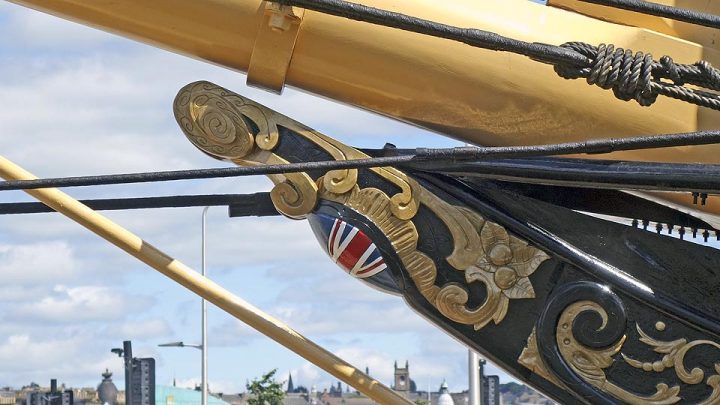Having refurbished the masts and rigging, the RRS Discovery Figurehead also needed replacing.
RRS Discovery was the last traditional wooden three-masted ship to be built in Britain. Designed for Antarctic research, it was launched as a Royal Research Ship (RRS) in 1901. Its first mission was the British National Antarctic Expedition, carrying Robert Falcon Scott and Ernest Shackleton on their first, successful journey to the Antarctic, known as the Discovery Expedition. It is now the centrepiece of a visitor attraction in its home town, Dundee.
Crafting the RRS Discovery Figurehead
The first stage was to laminate some big timbers of Douglas fir. These were surface planed on touching sides and then laminated using Resorcinol glue. Once fully cured, they were cut it in two with a chainsaw, surface planed both sides and then glued together to achieve the required dimensions. The finished piece was squared with an electric planer.
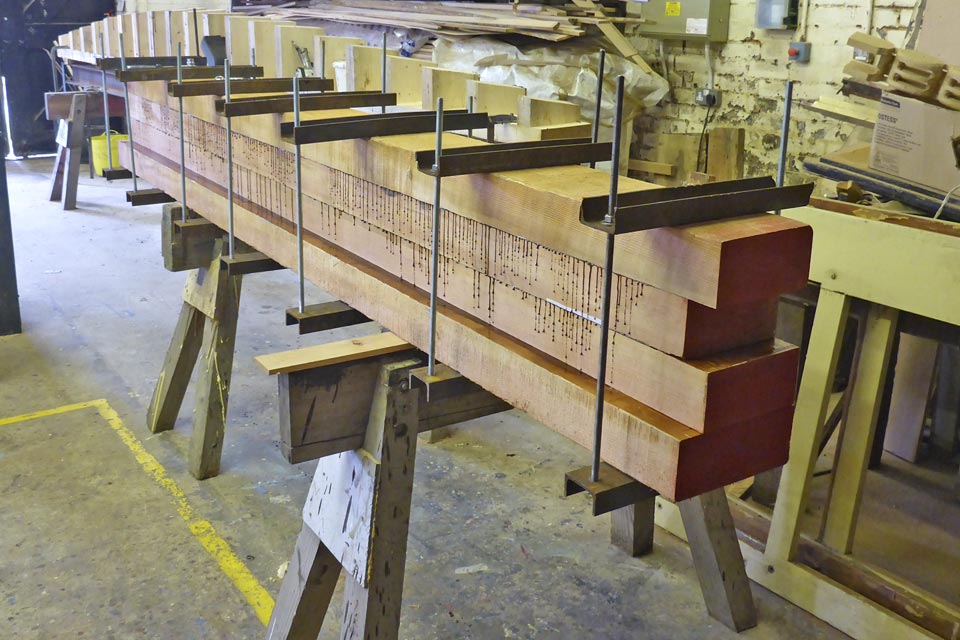
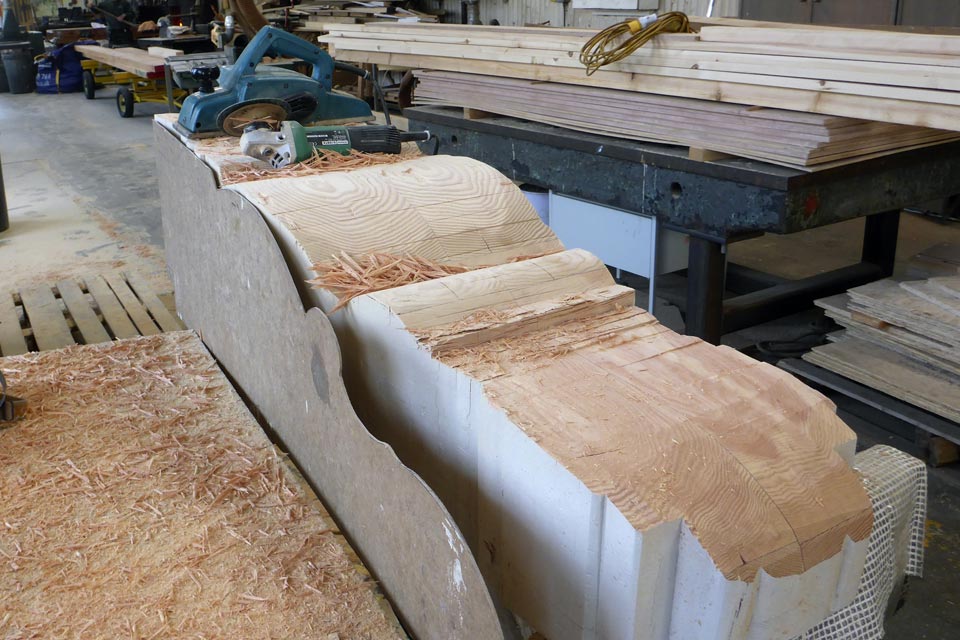
Top and side profiles of the remaining rotten figurehead were accurately taken, ensuring a like-for-like recreation of this beautiful piece of British maritime history.
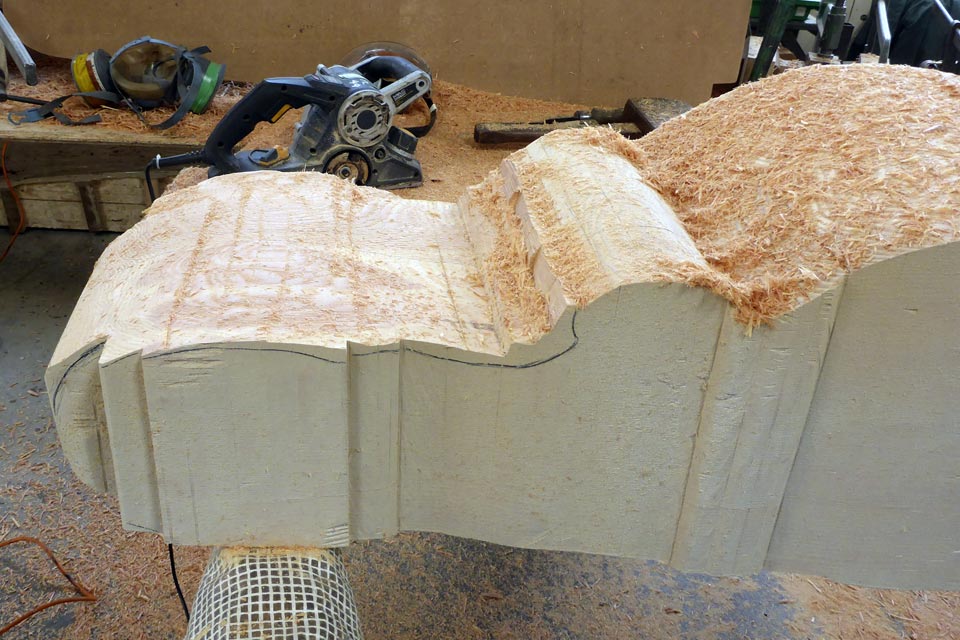
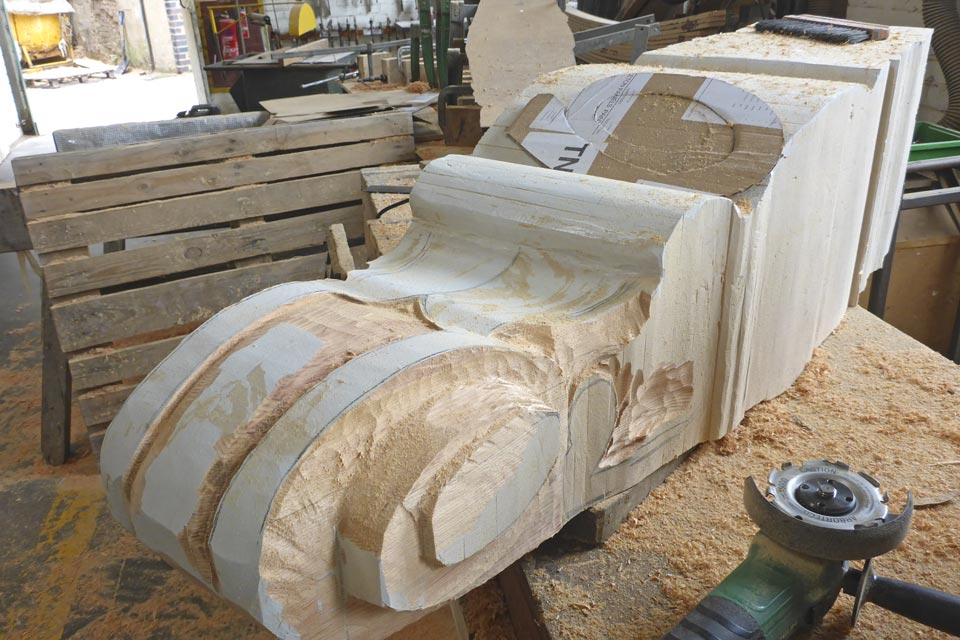
The rough faces were then smoothed down more accurately with electric planers and an angle grinder with a flexible abrasive disc. This gives a nice, accurate, starting point with the maximum size for the carving to begin.
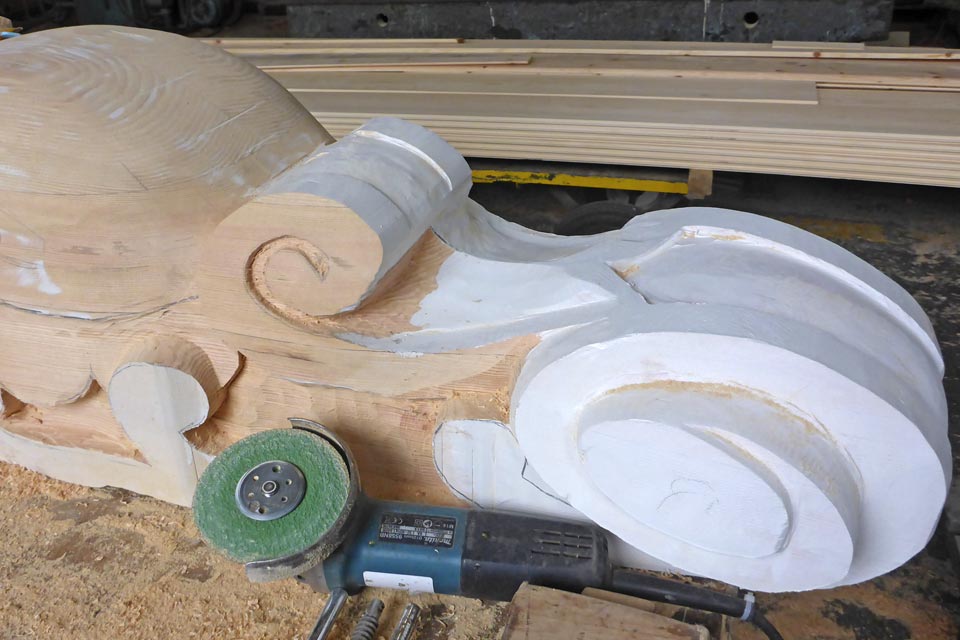
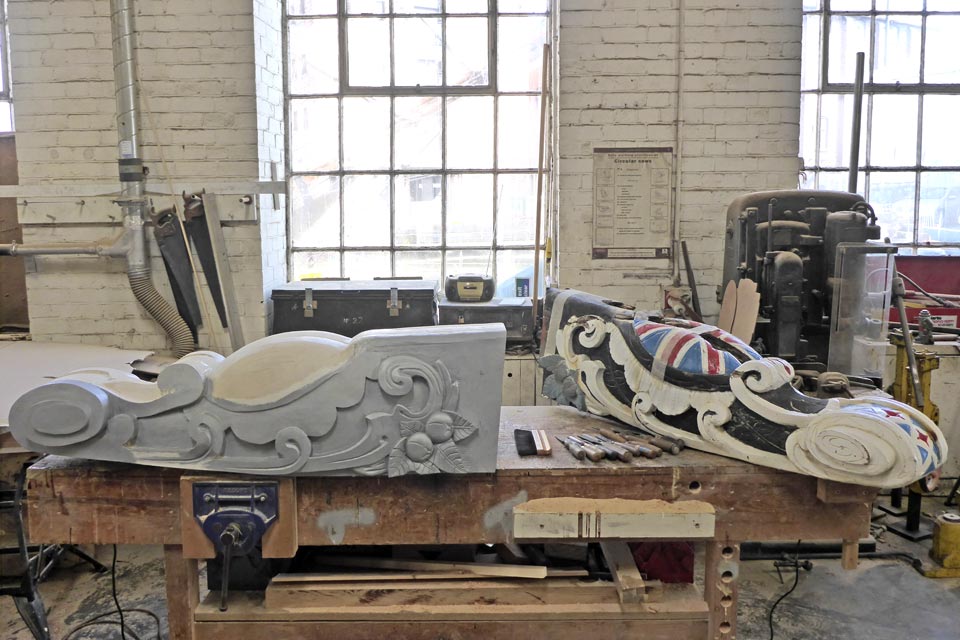
At the beginning of the carving process only angle grinders were used. Two different types of chain carver discs proved excellent at removing vast amounts of wood quickly and flexible abrasive discs were used for smoothing down. Templates were made to recreate certain complicated sections and much was accomplished by eye and touch.
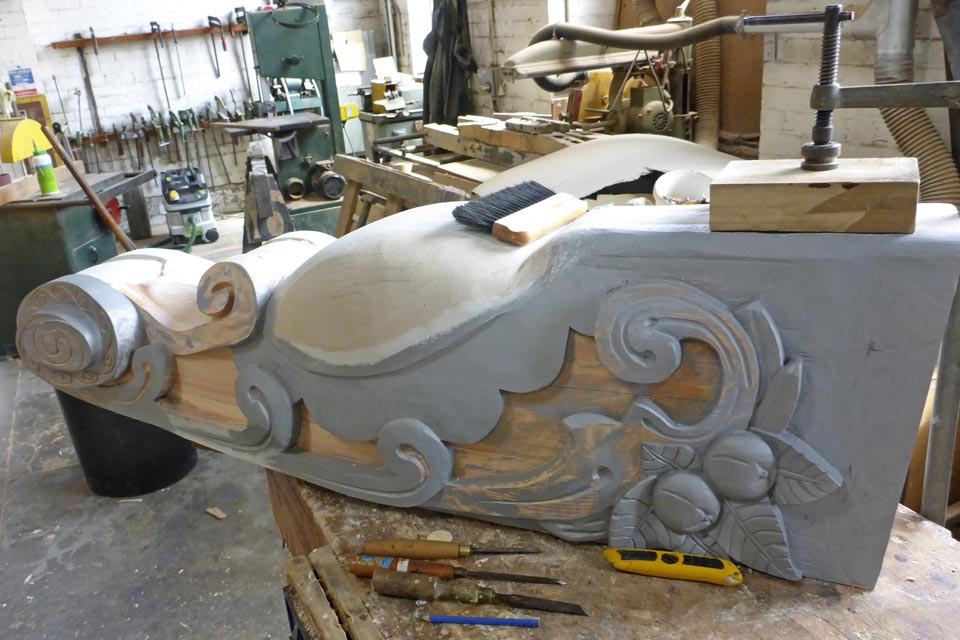
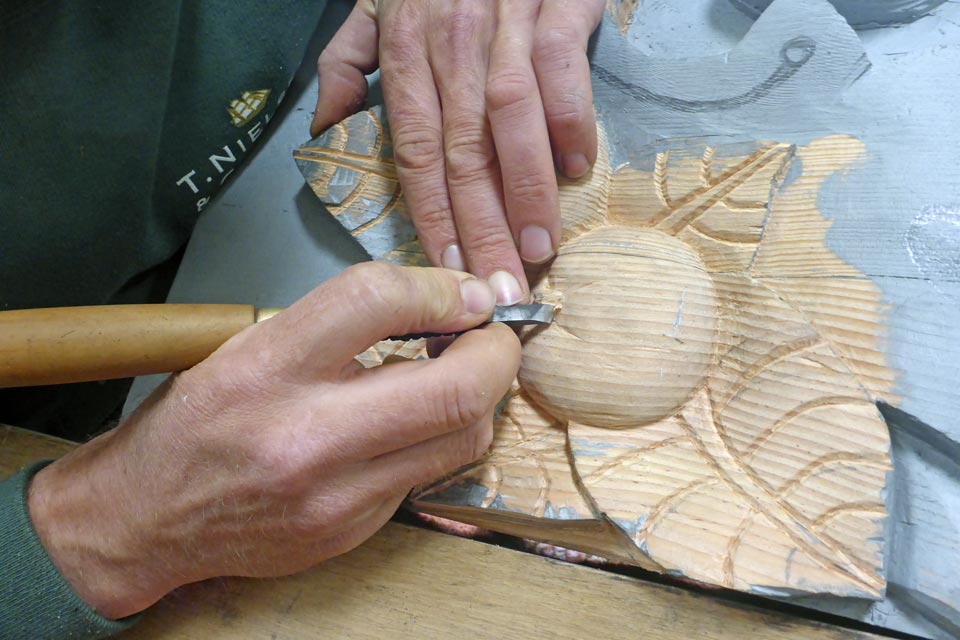
A wide variety of chisels and gouges were then used and good knowledge of woodgrain and edge tool sharpening was essential. The figurehead started to take shape with the carving becoming more intricate.
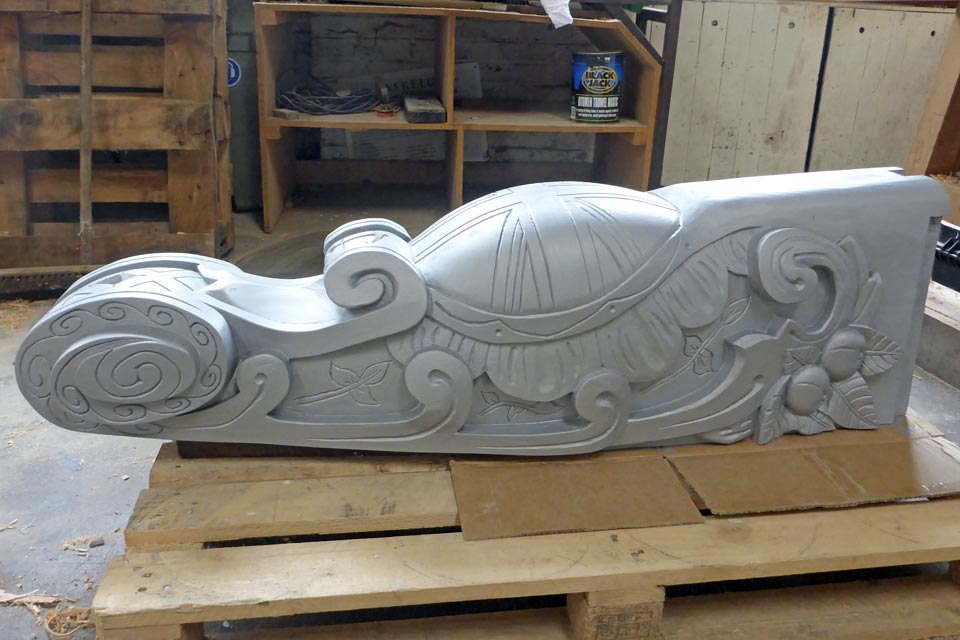
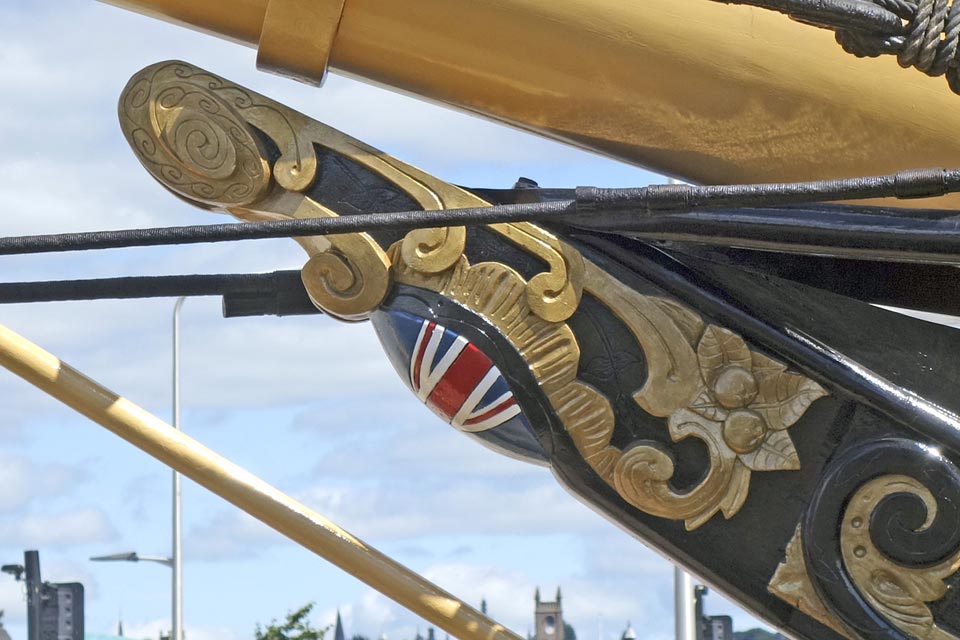
The finished carving ready for shipping to Scotland to be painted and then attached.

